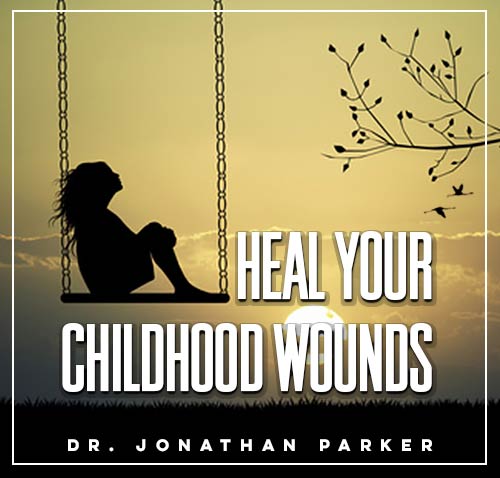Guide to Childhood Emotional Healing

Looking for more amazing products? Check out our online store and explore our collection here! Happy shopping!
Before diving in, please note: This post is for informational purposes only. If you’d like to know more about how we approach topics, feel free to check out our friendly Disclaimer Page.
Hey there, amazing readers! 
We’re committed to delivering quality posts, and your support (even just sticking around despite the ads) means everything to us. So, bear with us, and thanks for helping us keep the good vibes rolling. Now, on to the fun stuff!
TRANSLATE BUTTON AT THE END OF THE ARTICLE
Understanding Childhood Emotional Healing
Childhood emotional healing refers to the process of addressing and resolving the emotional wounds that individuals may have acquired during their formative years.
These wounds can stem from various sources, such as neglect, abuse, loss, or other traumatic experiences.
Healing from these emotional scars is crucial for overall well-being and mental health in adulthood.
By acknowledging and working through these past hurts, individuals can experience a sense of liberation and emotional freedom.
Importance of Addressing Childhood Trauma
Addressing childhood trauma is essential because unresolved emotional wounds from childhood can significantly impact an individual’s life in various ways.
These unresolved issues can manifest in relationships, career choices, self-esteem, and overall emotional well-being.
By confronting and addressing these traumas, individuals can break free from negative patterns and behaviors that may have been ingrained in them since childhood.
Identifying Emotional Wounds from Childhood
Identifying emotional wounds from childhood can be a challenging but necessary step in the healing process.
These wounds may manifest as deep-seated fears, anxieties, insecurities, or self-doubt.
It is essential to reflect on past experiences and how they have shaped one’s emotional landscape to begin the healing journey.
Journaling or talking to a therapist can help individuals uncover and process these emotional wounds.
Recognizing the Impact of Childhood Experiences
Childhood experiences have a profound impact on shaping an individual’s beliefs, behaviors, and emotional responses.
Positive experiences can foster resilience and emotional well-being, while negative experiences can lead to emotional scars that require healing.
By recognizing the impact of childhood experiences, individuals can gain insights into their current emotional struggles and begin the process of healing and transformation.
Steps to Begin the Healing Process
To begin the healing process, individuals must first acknowledge and accept the emotional wounds from their childhood.
This may involve seeking therapy, joining support groups, or practicing self-care activities that promote emotional healing.
It is essential to create a safe and supportive environment that allows for vulnerability and emotional expression.
By taking the first steps towards healing, individuals can pave the way for growth and transformation.
Building a Support System for Emotional Healing
Building a support system is crucial for emotional healing as it provides a sense of belonging, acceptance, and validation.
This support system can consist of friends, family members, therapists, or support groups who can offer guidance and encouragement during the healing journey.
Having a strong support system can help individuals feel less alone in their struggles and provide a safe space for emotional expression.
Various Therapeutic Approaches for Healing
There are various therapeutic approaches that individuals can explore to facilitate healing from childhood emotional wounds.
Some common approaches include cognitive-behavioral therapy, psychodynamic therapy, art therapy, or EMDR (Eye Movement Desensitization and Reprocessing).
Each therapeutic approach offers unique benefits and techniques for processing emotions and resolving past traumas.
It is essential to find a therapeutic approach that resonates with one’s needs and preferences.
Practicing Self-Compassion in Healing
Self-compassion is a crucial aspect of healing from childhood emotional wounds as it involves treating oneself with kindness, understanding, and acceptance.
Individuals who practice self-compassion are more likely to forgive themselves for past mistakes, show themselves empathy, and cultivate a sense of inner peace.
By practicing self-compassion, individuals can create a nurturing and supportive inner dialogue that promotes emotional healing and self-growth.
Journaling as a Tool for Processing Emotions
Journaling is a powerful tool for processing emotions and gaining insights into one’s inner world.
Discover "SUPERFOODS: The Key to Health and Balance
"
By writing down thoughts, feelings, and experiences, individuals can explore their emotions in a safe and non-judgmental space.
Journaling can help individuals identify patterns, triggers, and unresolved emotions from childhood that may be affecting their present-day experiences.
It is a therapeutic practice that can promote self-reflection, emotional release, and healing.
Incorporating Mindfulness in Healing
Mindfulness is a practice that involves being present in the moment, observing thoughts and emotions without judgment.
By incorporating mindfulness into the healing process, individuals can cultivate self-awareness, emotional regulation, and inner peace.
Mindfulness techniques such as meditation, deep breathing, or body scans can help individuals connect with their emotions, release tension, and foster a sense of calmness.
By practicing mindfulness regularly, individuals can navigate through emotional healing with greater ease and clarity.
Long-Term Effects of Childhood Emotional Healing
The long-term effects of childhood emotional healing are profound and far-reaching.
By addressing and resolving emotional wounds from childhood, individuals can experience increased self-awareness, emotional resilience, and inner peace.
Healing from past traumas can lead to healthier relationships, improved self-esteem, and a greater sense of fulfillment in life.
It is an ongoing process that requires dedication, self-reflection, and a willingness to confront past pain.
However, the rewards of emotional healing are invaluable and can transform one’s life in meaningful ways.
Celebrating Progress in the Healing Journey
As individuals progress in their healing journey, it is essential to celebrate each milestone and acknowledge the courage and resilience it takes to confront past traumas.
Celebrating progress can involve reflecting on how far one has come, expressing gratitude for the support received, or treating oneself to self-care activities.
By celebrating progress, individuals can boost their confidence, motivation, and sense of accomplishment, which can propel them forward in their healing journey.
Each step taken towards healing is a victory worth celebrating.

The Enlightenment Journey is a remarkable collection of writings authored by a distinguished group of experts in the fields of spirituality, new age, and esoteric knowledge.
This anthology features a diverse assembly of well-experienced authors who bring their profound insights and credible perspectives to the forefront.
Each contributor possesses a wealth of knowledge and wisdom, making them authorities in their respective domains.
Together, they offer readers a transformative journey into the realms of spiritual growth, self-discovery, and esoteric enlightenment.
The Enlightenment Journey is a testament to the collective expertise of these luminaries, providing readers with a rich tapestry of ideas and information to illuminate their spiritual path.
Our Diverse Expertise
While our primary focus is on spirituality and esotericism, we are equally passionate about exploring a wide range of other topics and niches 

To ensure we provide the most accurate and valuable insights, we collaborate with trusted experts in their respective domains 
Discover "Sports Nutrition: The Importance of Nutrition and Exercise for Overall Health
"
Our blog originally focused on spirituality and metaphysics, but we’ve since expanded to cover a wide range of niches. Don’t worry—we continue to publish a lot of articles on spirituality! Frequently visit our blog to explore our diverse content and stay tuned for more insightful reads.
Hey there, amazing reader! 
Check out our store here and take a peek at some of our featured products below! Thanks for being awesome!
















